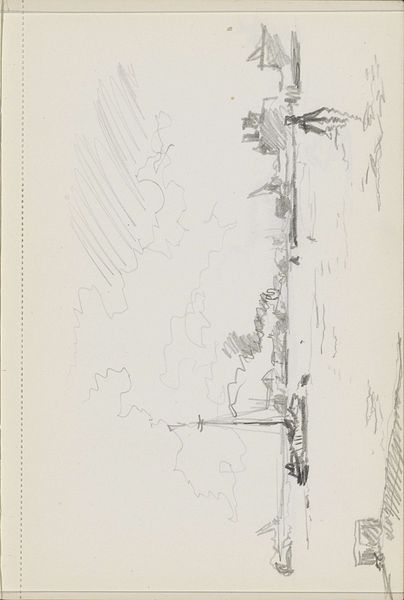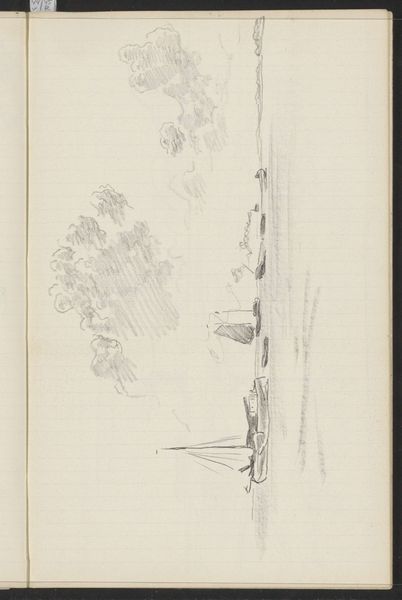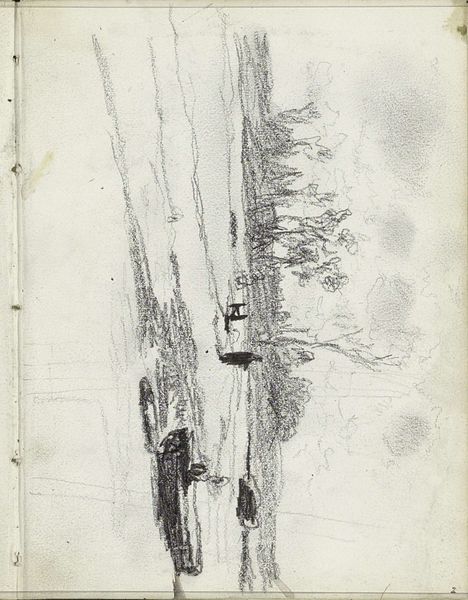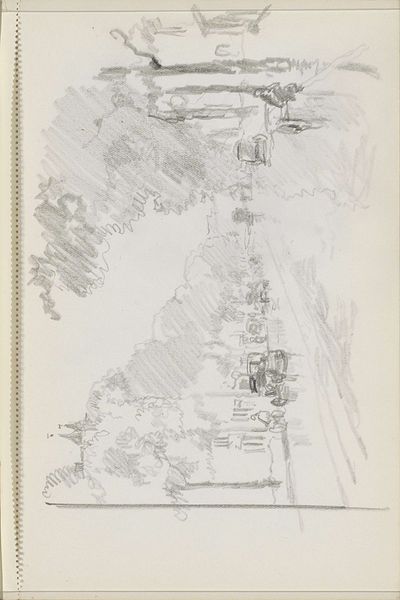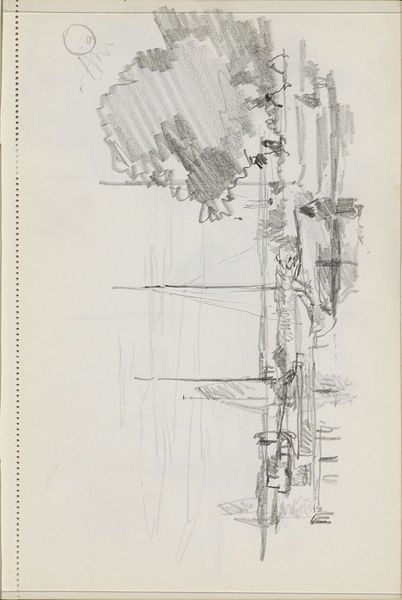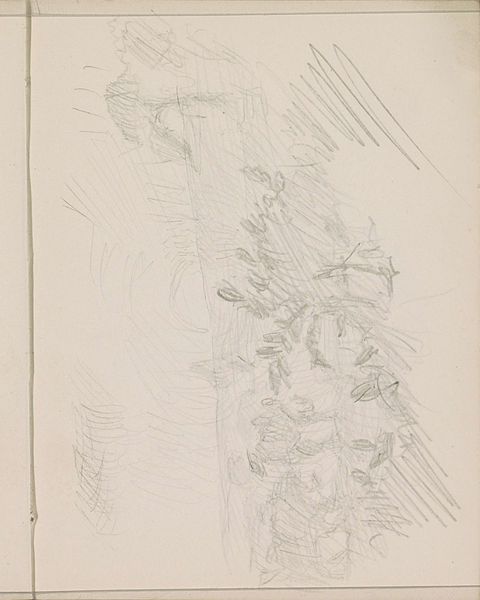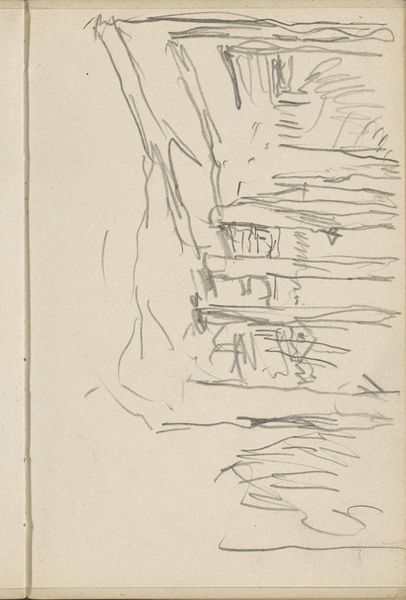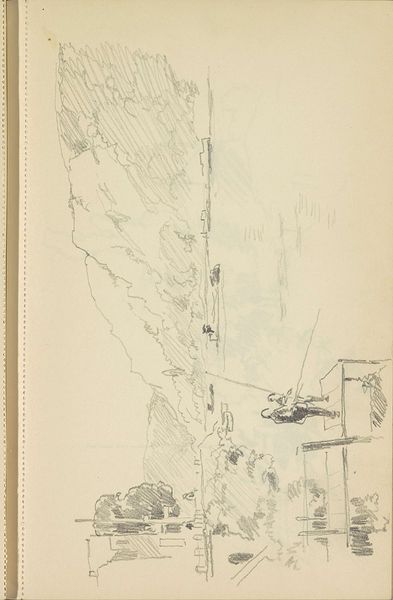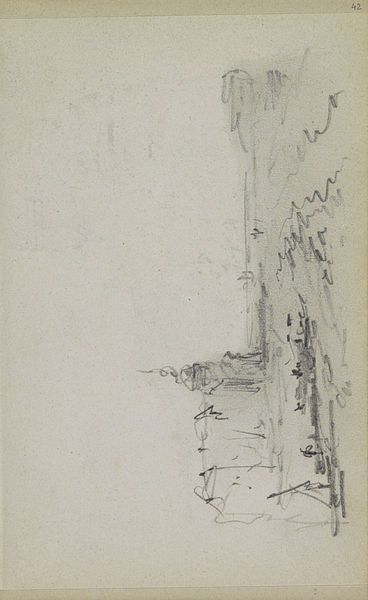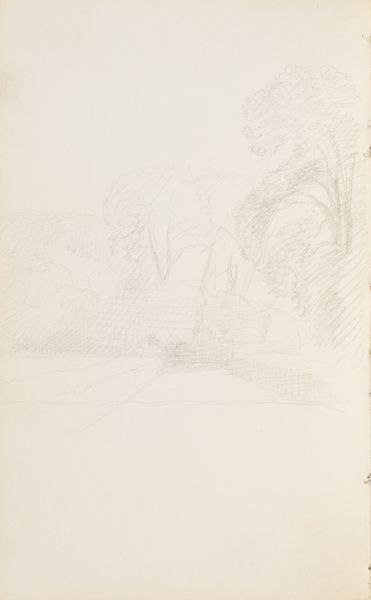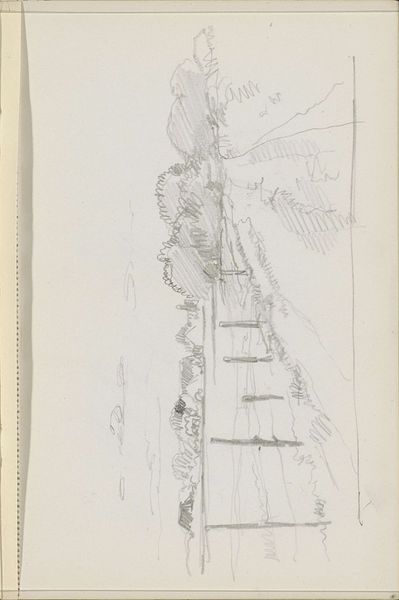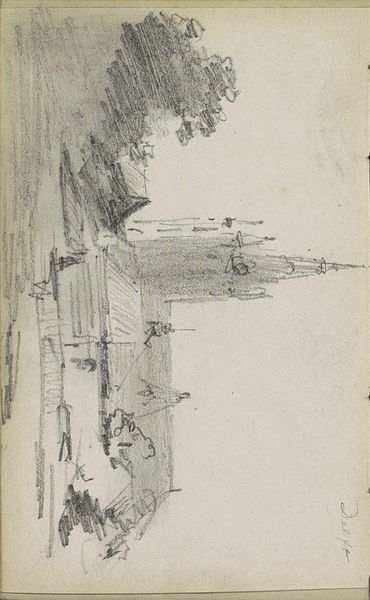
Copyright: Rijks Museum: Open Domain
Editor: So, this is Cornelis Vreedenburgh's "Zeilboten op het water," likely done between 1890 and 1946. It’s a pencil drawing, giving it this ephemeral, fleeting quality. It almost feels like a memory fading at the edges. What do you see in this piece? Curator: It is fascinating how Vreedenburgh uses such spare lines to evoke not just a visual scene, but a whole host of sensory experiences linked to boats on the water. Notice the almost spectral quality of the pencil lines. Does it evoke a sense of Dutch maritime history for you? Of a people connected by water, navigating trade and identity through these very vessels? Editor: I hadn’t thought of the cultural significance quite like that, I was focused more on the… light touch. It does feel quintessentially Dutch now that you mention it. The simplicity… Curator: The sparseness reinforces that impression. The boat as a symbol, repeated through centuries of art, recalls not just practical transport, but exploration, freedom, even vulnerability. Does that fragility of the lines relate for you to a human story, as much as it does to a scene? Editor: Yes, I see that now! It's not just a landscape. There is an entire weight of symbolic nautical association behind something as simple as the outline of a sailboat. That gives me a whole new appreciation for it. Curator: Exactly. Consider then how artists rely on cultural memory – these inherited meanings – to communicate complex ideas quickly, using universal symbolic shorthand to express collective memories. Editor: I’ll definitely look at landscapes differently from now on! Thanks for the insight.
Comments
No comments
Be the first to comment and join the conversation on the ultimate creative platform.
